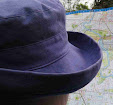 |
| Unpacking their Christmas billies at Lemnos, December 1915. AWM collection. |
"In October, 1915, the 6th Grade
(then the 2nd) at Kensington State school, sent a billy-can to
a soldier at the front. Sgt.-Major Fleming, D.C.M., whilst
lying wounded in hospital at Lemnos, after the evacuation of
Gallipoli, received this billy filled with gifts, good wishes
and little messages of love from the children, which he
answered, thus beginning a correspondence lasting 2½ years,
between the scholars and their soldier brother. Each mail
brought and took letters, parcels, comforts, papers, etc. to
and from the school children, to the battle fields of Egypt,
France, Belgium and later to hospitals in England, each child
being eager to write to "Brother Tom" (and equally as eager
for an answer, which always came) resulted in some hundreds of
letters passing between this Anzac and his little Australian
brothers and sisters, who treasured very much the interesting
and cheery letters from their adopted soldier-brother. Following
the usual custom, the contents off the parcels were divided
amongst the men with the Sgt.-Major, and many thanks were sent
to "Fleming's Kids," as the children were called by the
soldiers.
Great was the joy when the
scholars' learnt that their soldier had won the D.C.M., but
great was the sorrow when they learnt that he had been badly
wounded, and would be in hospital for months. Even when
suffering fearful pain, he managed to write a few words to
the class, telling them not to worry about him, but to ask
that he might be spared to see them. The children brought
their pennies to school, and a cablegram of sympathy was sent
to the hospital in England. The English nurses were so
touched by this action that they had the message pasted up in
the ward, and when ever the Australian mail arrived they
would say: "Here's more love and messages from your 60
brothers and sisters." Just before Easter the long-expected news
came that the soldier-brother was to be sent home, and
eagerly was each list of returning men read over, to find the
name of the one expected, and soon after he came from his
home in New South Wales especially to see his little friends.
One needed to be present on that occasion to realise the
pride and love Australian children have for "Our Boys."
Speaking of his escort to the
school by the children, the Sgt. Major re marked that it was
the finest escort he had ever had or wished to have. After
making friends with his little brothers and sisters, the whole
party, at the invitation of their big brother, went for a
picnic to North Essendon, and spent such a happy time that
the day with "Brother Tom" will be remembered for many years.
Besides serving his king and country in Africa, Sgt.-Major
Fleming has had 3½ years' active service in this war, and he
considered that he had been brought back safely, though much
battered, to Sunny Australia and his dear home-folk by the love
and prayers of the little ones, who asked every morning,
before starting the day's lessons, that God would bless and
take care of their soldier-brother".
A RETURNED HERO. (1918, May 2). The Essendon Gazette and Keilor, Bulla and Broadmeadows Reporter (Moonee Ponds, Vic. : 1914 - 1918), p. 5 Edition: Morning. Retrieved June 11, 2012, from
http://nla.gov.au/nla.news-article74605775
The service details of 1762 Sergeant-Major Thomas William Fleming. Fleming enlisted in 1914, and received a gunshot wound to the right arm not long prior to the evacuation, and would have been likely to have been in hospital when the Christmas billies were distributed. Fleming was wounded for a second time in June 1917 and evacuated to England. He returned to Australia on the A14 on 23 March 1918, and was landed at Melbourne, returning to NSW overland (by train). This article refers to a group of returned soldiers being received at the Sydney Central Railway Station, specifically mentioning "Staff-Sergeant T W Fleming, DCM".
BACK IN SYDNEY. (1918, March 23). The Sydney Morning Herald (NSW : 1842 - 1954), p. 13. Retrieved June 14, 2012, from http://nla.gov.au/nla.news-article15775397
Fleming's B2455 shows that he had been a Staff-Sergeant, and also that he had not been awarded the DCM. Annotation on a letter from his wife about the medal appears to show that the army authorities had concluded that the DCM had been awarded in 1915 to a Major R Fleming of the Gordon Highlanders. Misinformation may have been relayed to Fleming which was not cleared up until years later.




